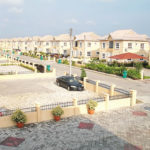CHALLENGES of housing in terms of quality and quantity appear to be the same all over the world, but in Nigeria, it is a complex case. Hardly would any event organised by professional bodies in the built environment pass without touching issue of paucity of housing delivery in Nigerian, yet, not much has been achieved.
But recently, at different fora, practical approach, devoid of mere rhetoric were proffered by competent stakeholders, that include the Minister for Power, Works and Housing, Mr. Babatunde Fashola, Lagos State Commissioner for Housing, Prince Gbolahan Lawal, a Private Developer, Chief Wale Aderinsola, among others.
Speaking with the Nigerian Tribune, Chief Aderinsola argued that the medium and low income segments of the population, most of who live in urban centres, suffer severe housing crisis, arguing that the most practicable option is to follow the step of the first civilian administration in Lagos state, led by Alhaji Lateef Kayode Jakande, under whose workers at all categories applied and received allocations, according to their financial capacities.
“The administration was so practical and transparent, by ensuring that no money bags hijacked the programme, unlike now that party chieftains and political contractors would buy government estates and sub letting it to the common people, who need the houses”, he said, adding that the best way to ensure that the rightful allottees get the house is to ensure transparency, which according to him, is reflecting in the Governor Akinwunmi Ambode’s LagosHoms’ programmes.
To the Power, Works and Housing Minister, Babatunde Fashola, the road map to meeting the housing shortage is to evolve nationally acceptable designs that respond to and accommodate Nigeria’s socio-cultural diversity.
According to Fashola, having evaluated some 21 options available, based on research, have adopted some designs, with input from a diverse team of Architects across the country:
The options, according to him, is 1, 2 and 3 Bedroom bungalows, with court yards, that respond to the climate condition and cultural leanings in the North-East, North-West and North-Central parts of Nigeria; and Blocks of 16 and 24 flats of 1, 2 and 3 bedrooms and Bungalows of 1 and 2 bedrooms in the South-South, South-East and South-West of Nigeria and the FCT.
“The designs focus mainly on the greater majority, most vulnerable first-time home owners, who do not earn large incomes; junior workers in private companies; young families where husband and wife can pool their incomes together to qualify; artisans, drivers, market men and women, officials whose income bracket falls within grade levels 9 – 15 in the public service.
“Our plan for sustainable supply is to standardize designs and industrialize production. Here is where I have news for small and medium scale businesses who are in this line of business”, he said, adding that by standardizing fittings such as doors, windows, roofing sheets, tiles and other components, it allows the opportunity to use these standards to stimulate local mass production of fittings and finishing to meet the demands of mass housing.
For example, the Minister noted that smallest of houses will have at least a main door, a kitchen door, a room door and a bathroom door making a total of four doors.
“In order to build 250,000 units of that type of house, this market will need to produce at least, one million doors, that does not include pipes, taps and sockets for electrical appliances.
“Our surveys indicate that electrical fittings such as sockets and door locks are still largely imported and we will use our demand capacity to stimulate local manufacturing or assembly, in order to keep the jobs in these areas at home.
“Once this is done, the next step should be ascertaining who will develop. It is easy for the uninformed to wonder why this is important; after all, anybody can build a house”, Fashola noted, adding that developers in their dozens, applied almost on daily basis, offering to build 10,000 housing units, which observers perceived to be the magical number for some of these emergency developers, without verifiable pedigree and track record of where they have built a simple 100 Housing units.
There is the view that government should get out of housing and leave it only to the private sector, but so far, the proponents of this school of thought failed to show the proven capacity of the private sector on its own to meet the demand for housing and reduce the deficit considerably.
To the Lagos state government, where accommodation problems remain a daunting issue, and by estimate, her population is roving between 23-25 million, a more practical approach to housing delivery has become a great issue.
Credible statistics attests to the widening gap between housing need and available housing in the state. In 2016, for instance, the Commissioner for Housing, Mr. Gbolahan Lawal, said the state had a deficit of 2.5 million houses. The shortfall represents about 14.7 per cent of what the country’s total housing deficit, which the National Bureau of Statistics (NBS) put at 17 million at the same period.
Mallam Kabiru Sani Abdulallahi, an architect, while commenting on LagosHoms programme, noted that affordable housing, as reflected in Lagos, is housing that is accessible, appropriate, and secure, for the needs of the low and moderate income households, and is priced so that these households are also able to meet their other basic living costs like health, education, feeding etc. This is usually estimated at about 30 percent of gross household income”
Government can listen to investors’ problems, mandate teams to resolve them and put in place a feedback mechanism to monitor progress. The imperative being a single-minded focus towards achieving a shared vision for the delivery of markedly enhanced infrastructure stock including access to housing in the medium to long term.






